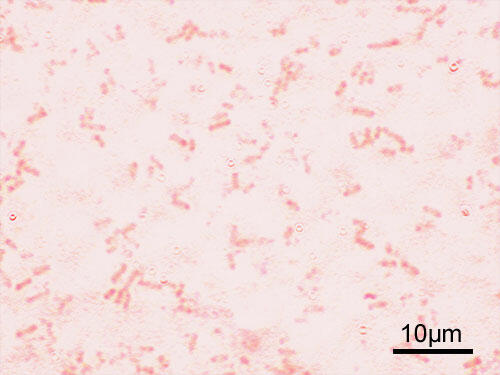
A researcher at LSTM, working with a team of Chinese investigators, has reported that the gene responsible for resistance to a last resort antibiotic, colistin, is functional and transferable in Shigella flexneri, one of the leading causes of diarrhoea worldwide.
In a paper published today in Applied and Environmental Microbiology, a journal of the American Society for Microbiology, the team describe the gene; mcr-1, in S. flexneri for the first time. This gene is contained in a transposon which itself is located on a plasmid, which can move from one bacterial cell to another carrying resistance to colistin with it.
The original host strain was also multidrug resistant, and that multidrug resistance was also transferable, according to the report. LSTM’s Dr Adam Roberts is a co-author of the study. He said: “This is a particularly concerning discovery as Shingella flexneri is the main cause of Shigella infections in low and middle-income countries, settings in which intestinal infections can prove fatal. If we are no longer able to treat these infections with colistin, which really is a drug of last resort, we will have run out of options.”
The study was carried out in China and investigators screened more than 2000 Shigella isolates for mcr-1, finding one isolate that tested positive. While this might seem scarce the researchers were keen to highlight that finding the mcr-1 in a isolate from a farm was still a relatively high frequency of detection compared to the clinical strains in the study. They also found, using a technique called filter-mating, that the plasmid was capable of transferring to a strain of E. coli, and was therefore likely to be able to move to other Shigella species.
Explaining the motivation for the research, Dr Roberts said: “In order to try and control antimicrobial resistance, we need to understand the epidemiology of the resistance genes and how they move around. This work is part of that overall effort. Now that we know mcr-1 is functional and can transfer in Shigella we can monitor this situation to see if Shigella is responsible for transfer of this gene to other species.”
The paper cites the intensive use of colistin in Chinese agriculture to boost growth of farm animals, as the key driver for selection of emergence and development of drug resistance. This use has allowed for the selection, transfer, and maintenance of plasmid mediated colistin resistance into clinical strains of E. coli, Klebsiella pneumoniae, Salmonella spp. and now Shigella flexneri.
Characterization of a transferable plasmid-borne mcr-1 in a colistin-resistant Shigella flexneri isolate
Beibei Liang, Adam P. Roberts, Xuebin Xu, Chaojie Yang, Xiaoxia Yang, Jinyan Wang, Shengjie Yi, Yongrui Li, Qiuxia Ma, Fuli Wu, Shaofu Qiu, and Hongbin Song
Appl. Environ. Microbiol. Accepted manuscript posted online 2 March 2018 doi:10.1128/AEM.02655-17